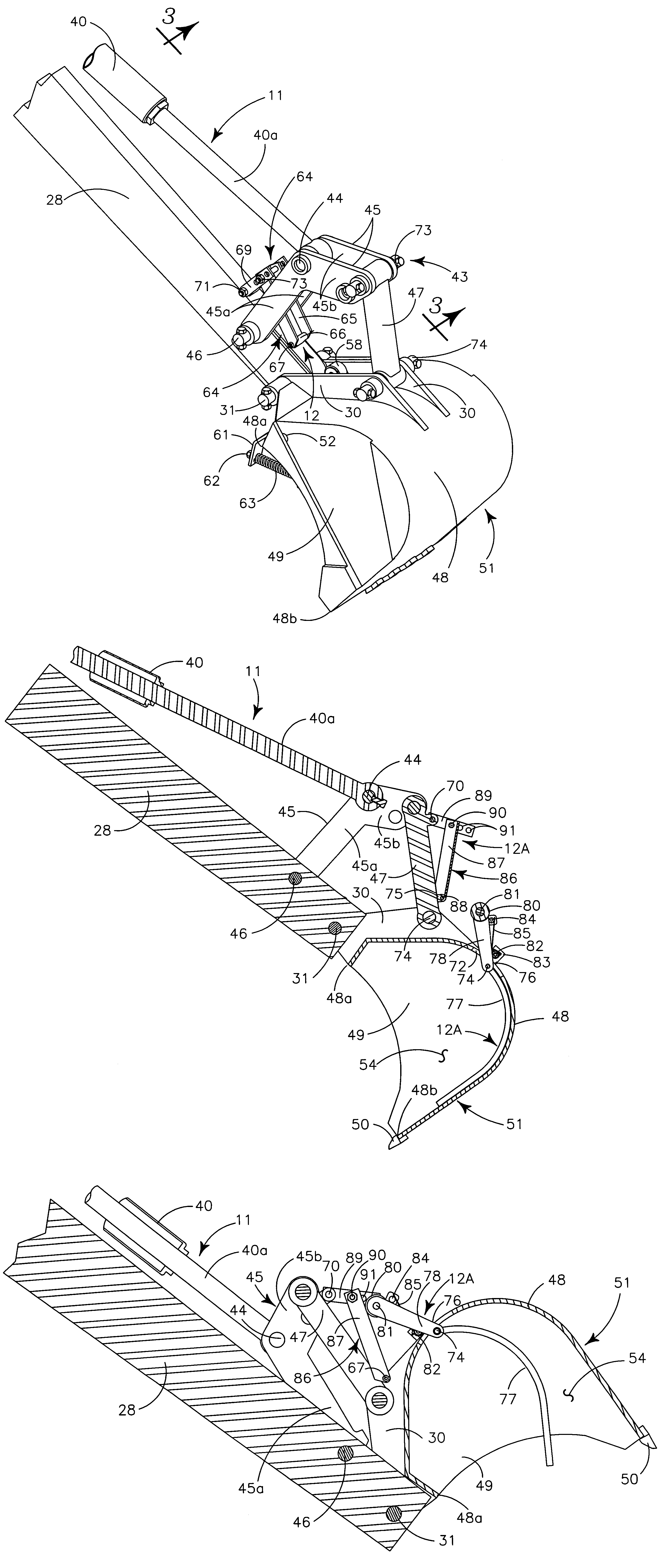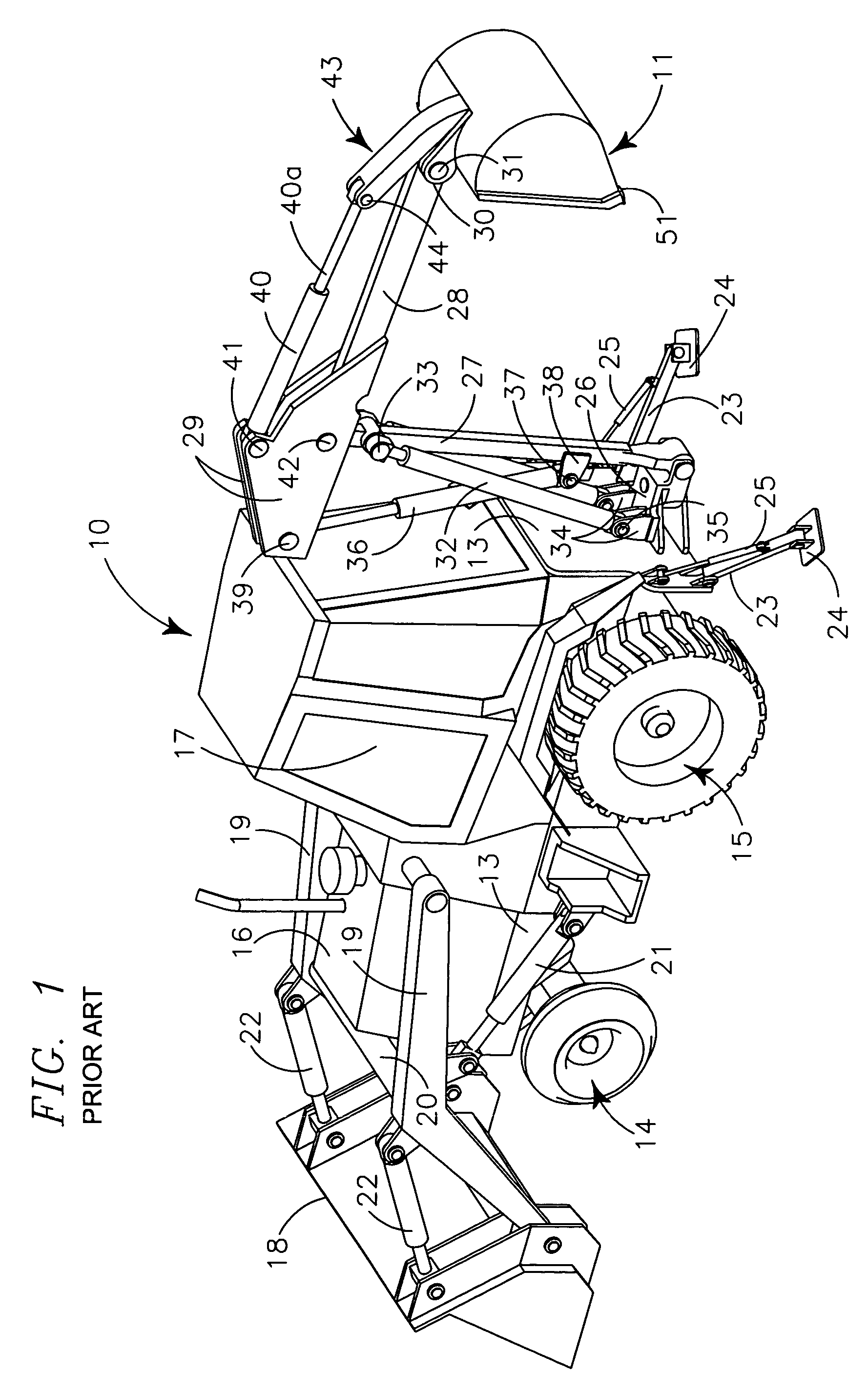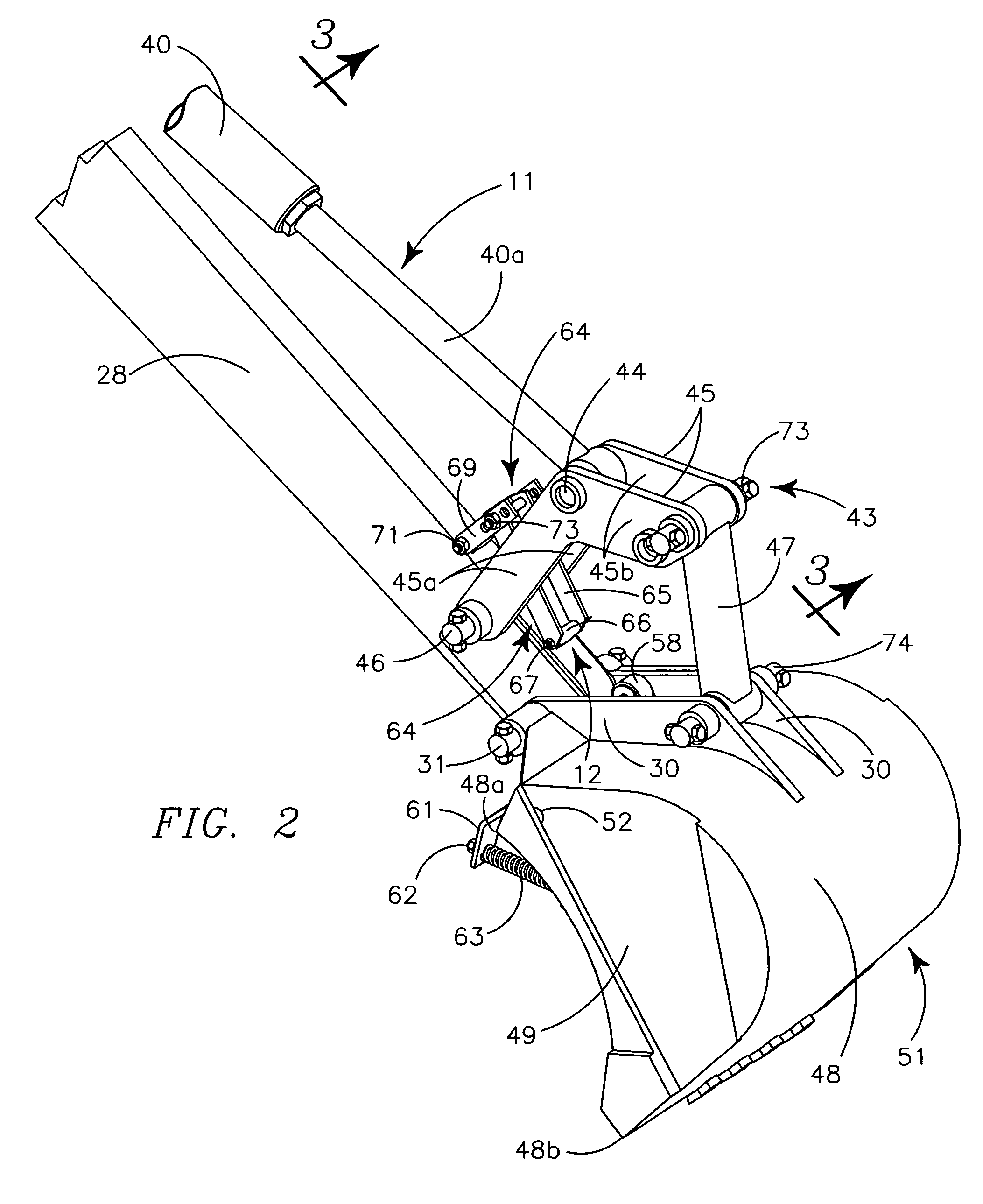Ejector mechanism for back hoe excavator bucket
a back hoe and excavating bucket technology, applied in the field of material handling, can solve the problems of not being removed, exacerbated problems, and effective operation, and achieve the effect of simple mechanical linkage and lessening the adhesion of materials
- Summary
- Abstract
- Description
- Claims
- Application Information
AI Technical Summary
Benefits of technology
Problems solved by technology
Method used
Image
Examples
Embodiment Construction
[0034]My invention generally provides ejector mechanism 12 in a first species and ejector mechanism 12A in a second species, both for use on a back hoe vehicle 10 having excavator bucket mechanism 11. The term “ejector arm shaft” as used herein refers to an ejector arm axle and a tubular sleeve carried by an ejector arm axle.
[0035]A somewhat generically illustrated back hoe, typical of such machines in the present day marketplace produced by various manufactures, is illustrated in FIG. 1. The back hoe vehicle 10 provides frame 13, supported on forward steerable wheel truck 14 and rearward driving wheel truck 15, and which in turn support motor structure 16 in its forward portion and operator cab 17 in its rearward portion. The forward portion of the back hoe vehicle 10 mounts larger load moving bucket 18 pivotally carried by similar laterally spaced angulated load moving bucket arms 19 pivotally supported on the upper elongately medial portion of frame 13. The load moving bucket arm...
PUM
 Login to View More
Login to View More Abstract
Description
Claims
Application Information
 Login to View More
Login to View More - R&D
- Intellectual Property
- Life Sciences
- Materials
- Tech Scout
- Unparalleled Data Quality
- Higher Quality Content
- 60% Fewer Hallucinations
Browse by: Latest US Patents, China's latest patents, Technical Efficacy Thesaurus, Application Domain, Technology Topic, Popular Technical Reports.
© 2025 PatSnap. All rights reserved.Legal|Privacy policy|Modern Slavery Act Transparency Statement|Sitemap|About US| Contact US: help@patsnap.com



